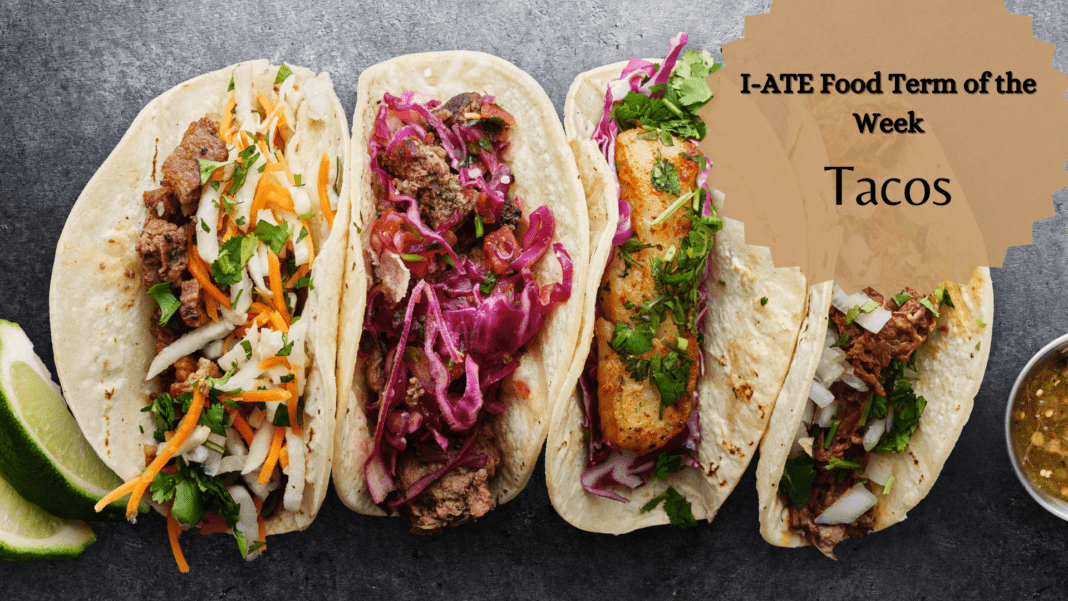The History of Tacos
Corn tortillas have been enjoyed for centuries, even before the Spanish colonies arrived in Mesoamerica. Before the tortilla machine was invented, local Indigegous communities would grind the maize using a nixtamal, a tool that has been used since 1,500 BC, to produce the masa or “corn dough”. It is even said that Moctezuma, the emperor that ruled the Aztec lands when the Spanish arrived, would enjoy his food using maize tortillas as spoons. The word taco originates from tlahco, which in the Aztec language Nahuatl, translates to “half” or “in the middle”. This explains why stuffed and folded in half corn tortillas are now being referred to as tacos.
The Modern Tacos
The modern and authentic Mexican taco was developed in the 19th century after silver mines boomed in Mexico, creating the original “Miners Taco”, along with the invention of the tortilla machine. From there, the habit of indulging tacos spread rapidly through the working-class of Mexico, and as a giant economic crisis created a shortage in jobs, locals began selling tacos on the streets and even in baskets. Just like that, one of the world’s most vibrant and diverse street food cultures started. Subsequently, after the 1930s and the intense Lebanese diaspora arriving in Mexico, the most emblematic and well known taco came to life – the Taco al Pastor. The shawarma and gyro technique to cook meat was adapted, but with pork and a very Mexican marination.
Since then, tacos have spread around Mexico, as well as the world sticking to the authentic “Tacos de Minero”, or fusions depending on the regions and availability of ingredients. In the coasts of Mexico you will find more fish and seafood based tacos, whereas in the U.S tacos can vary from flour to hard-shelled tortillas. If you ever find yourself in Mexico, or in a somewhat authentic Mexican restaurant, these are a must:
● The iconic Tacos al Pastor, of course, topped with fresh pineapple slices, lime and cilantro.
● Cochinita Pibil, with pickled red onion, cilantro and lime.
● Tacos Gobernador, well known in the coast of Sinaloa, and consists of flour tortilla, cheese, shrimp, and grilled onions and peppers.
References
A brief introduction to nixtamal (no date) Easy Foods. Available at: https://easyfoodsinc.com/2018/08/a-brief-introduction-to-nixtamal/ (Accessed: November 10, 2022).
Dominguez, L.F. (2021) The origin and history of Mexico’s most famous food: The Taco, Homeschool Spanish Academy. Available at: https://www.spanish.academy/blog/the-origin-and-history-of-mexicos-most-famous-food-the-taco/ (Accessed: November 10, 2022).
Flavours of the world: Taco gobernador (2020) clocfood.com. Available at: https://www.clocfood.com/post/origins-of-taco-gobernador (Accessed: November 10, 2022).
Written by Sophie Echeverry

Born and raised in Colombia, Sophie acquired a B.B.A. in International Business and Marketing in San Francisco, CA. She then moved to Austin, Texas, where she worked in a Business and Culture Etiquette consulting firm, and a Slow Travel Agency. She obtained her MBA in International Marketing in Geneva, Switzerland and now is pursuing a Master’s in Food Communication and Marketing at the University of Gastronomic Sciences in Italy, founded in partnership with Slow Food. She has lived in 5 countries, mastered 3 languages, gained experience interacting with diverse cultures and has become a passionate foodie!

